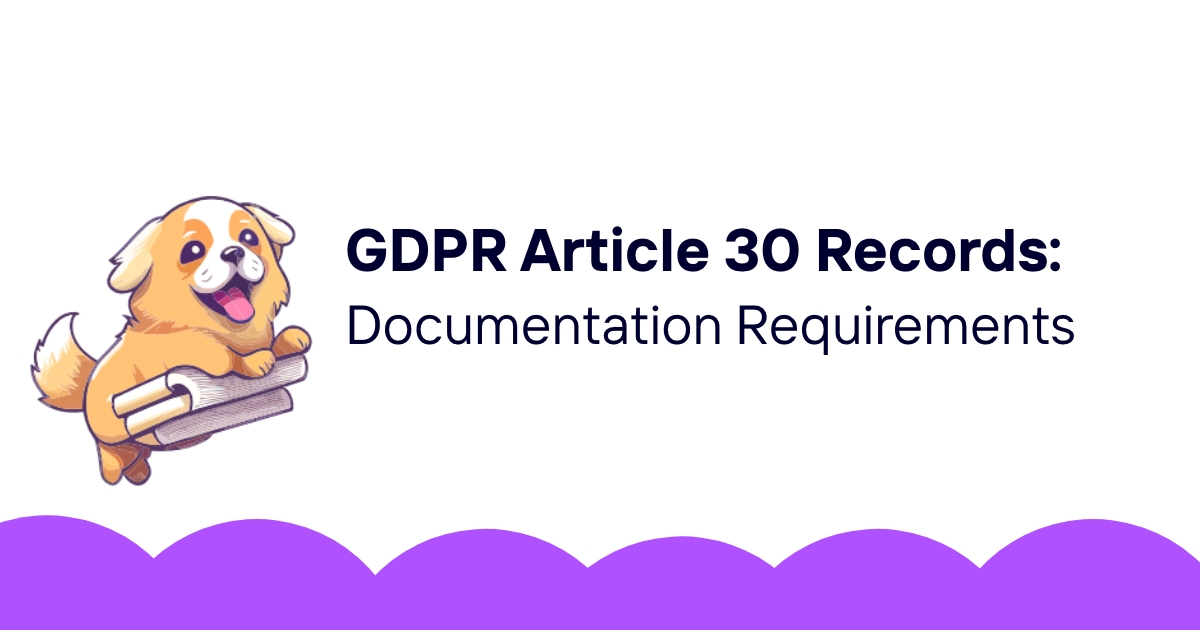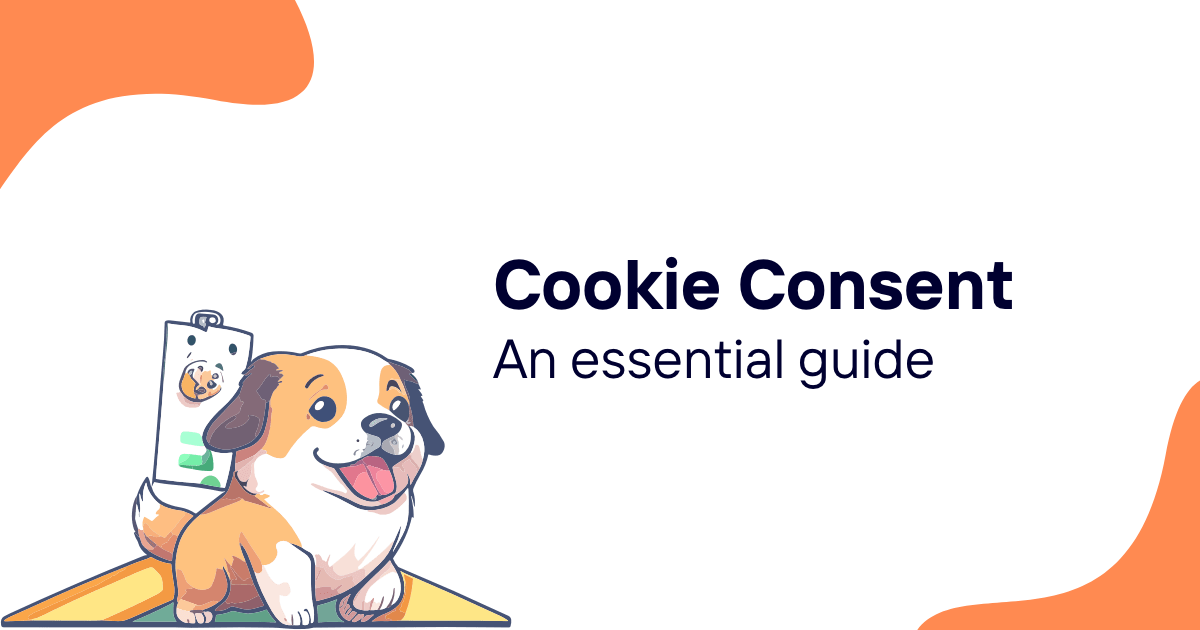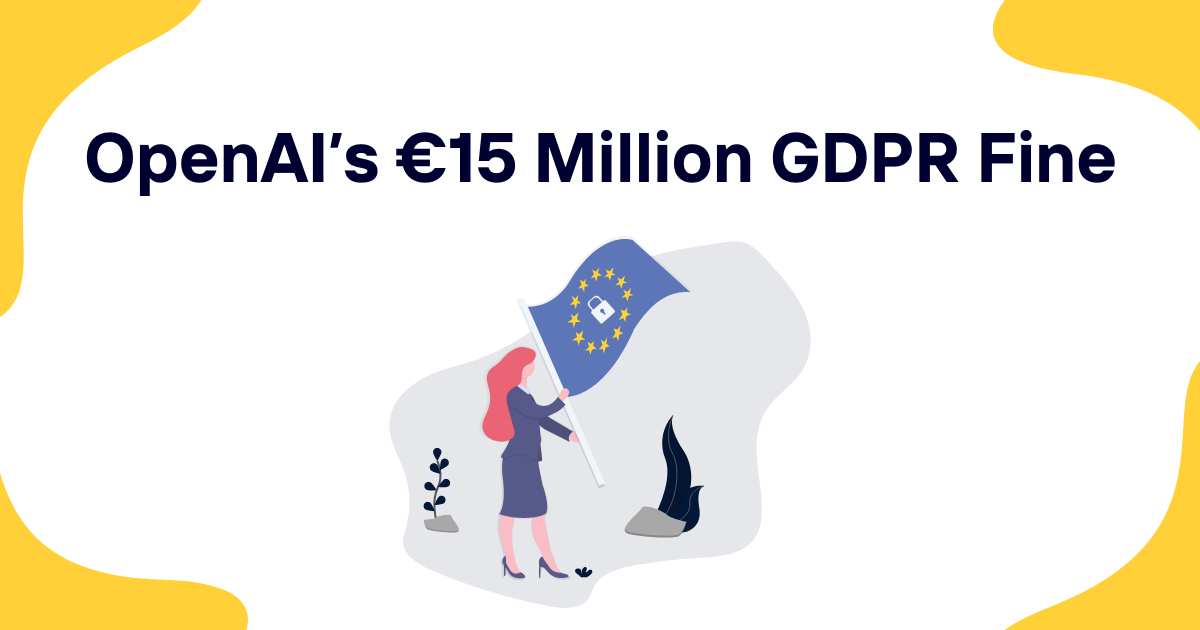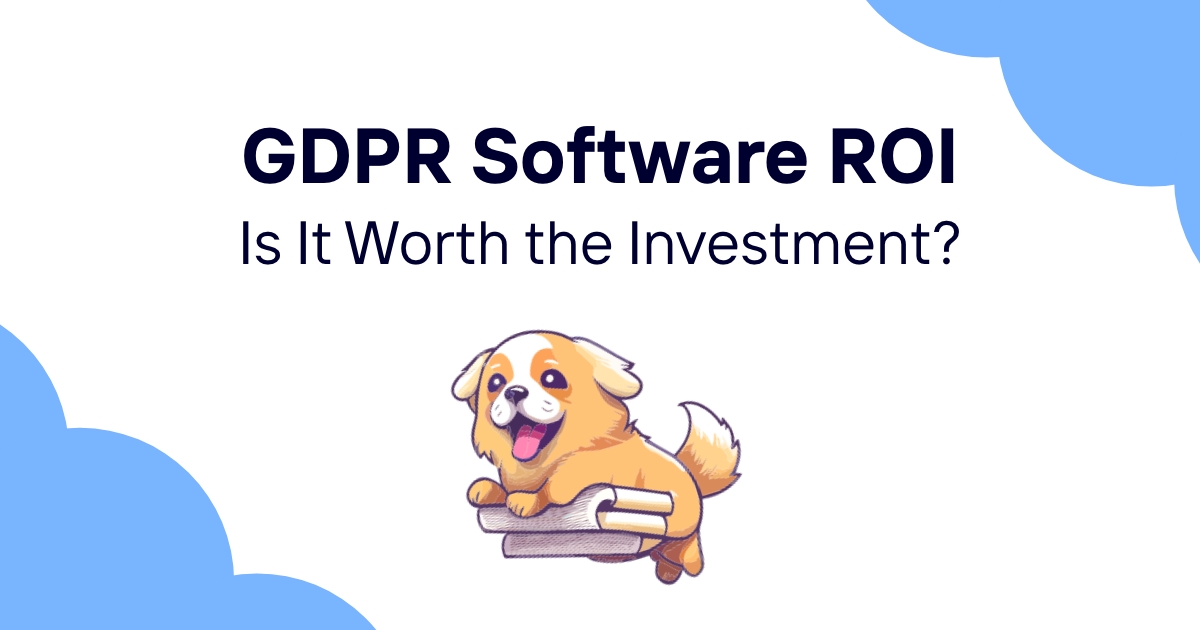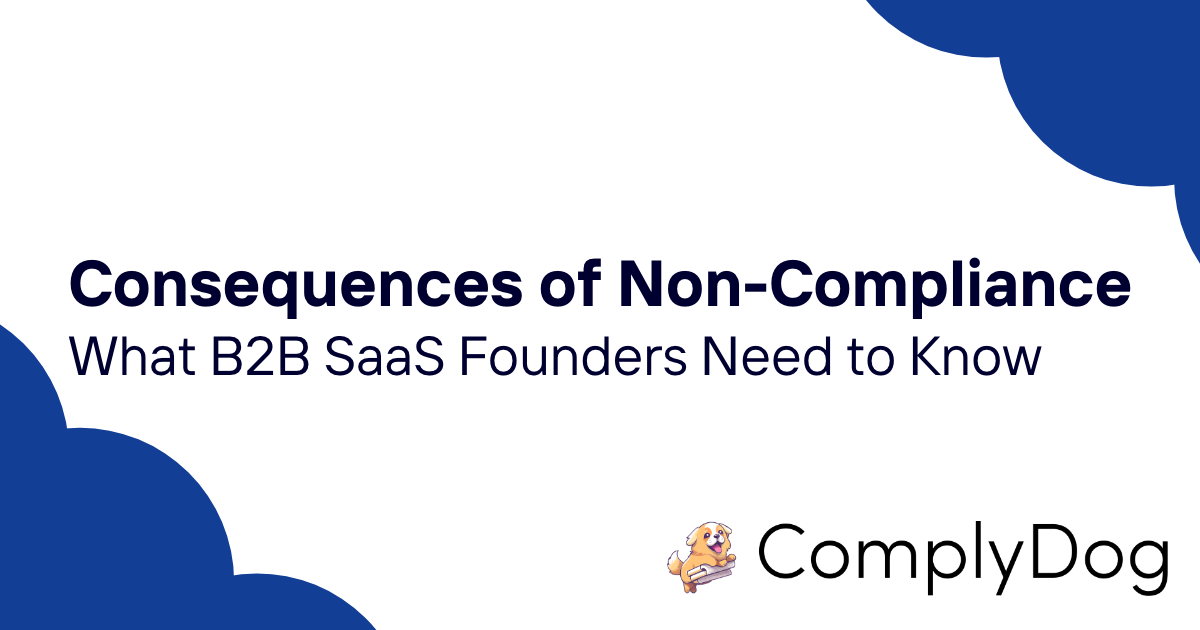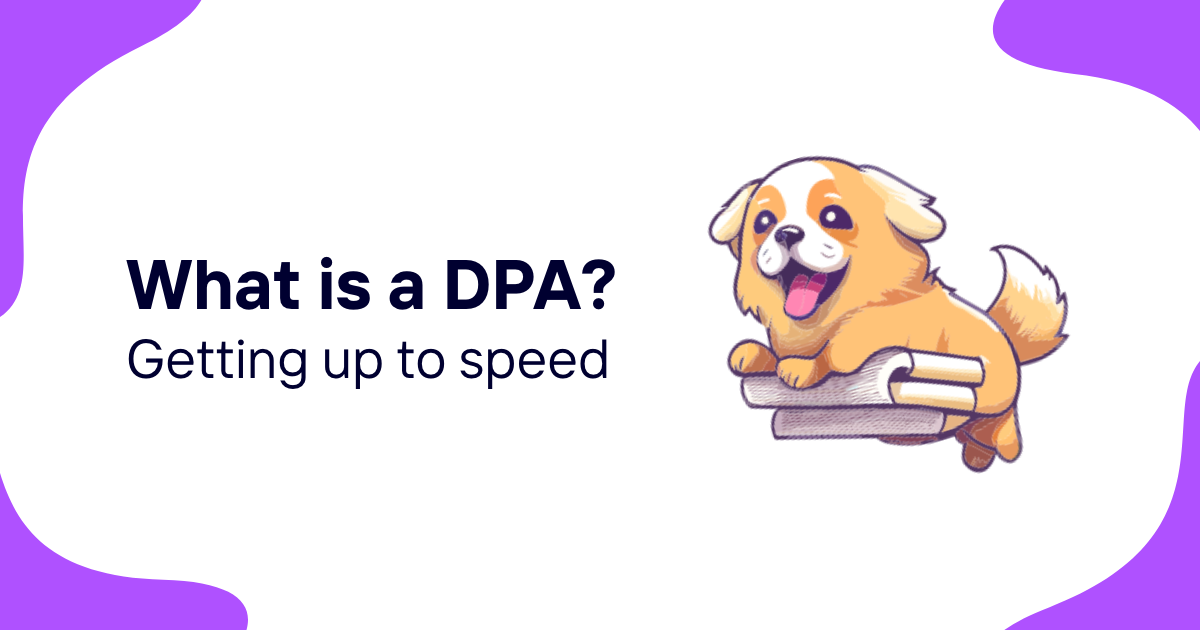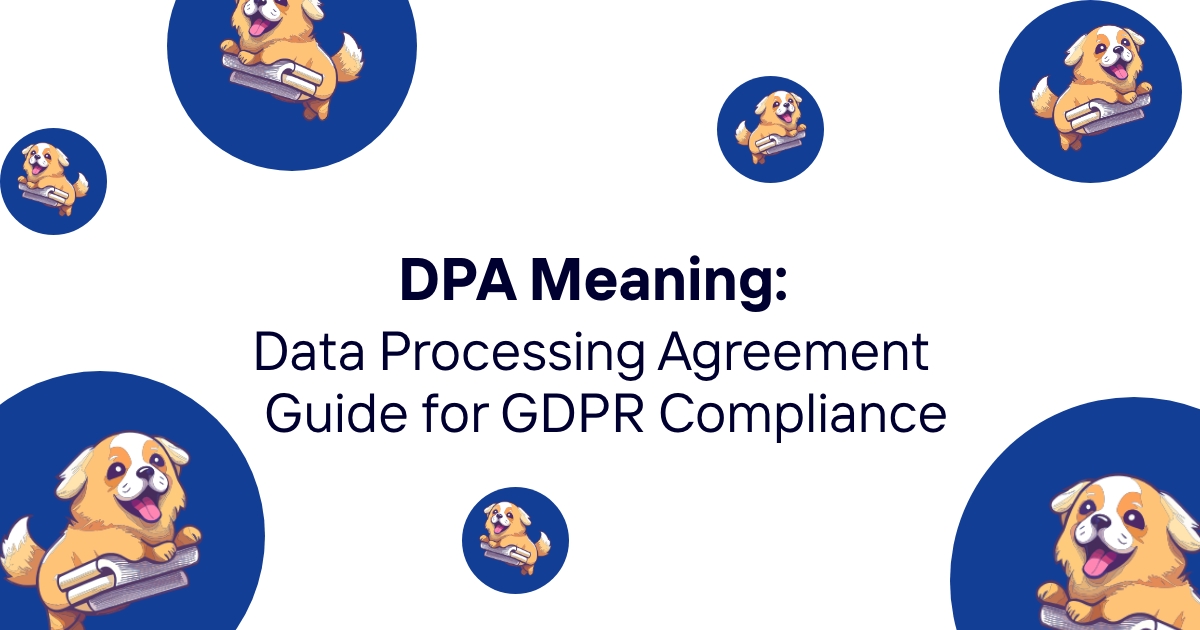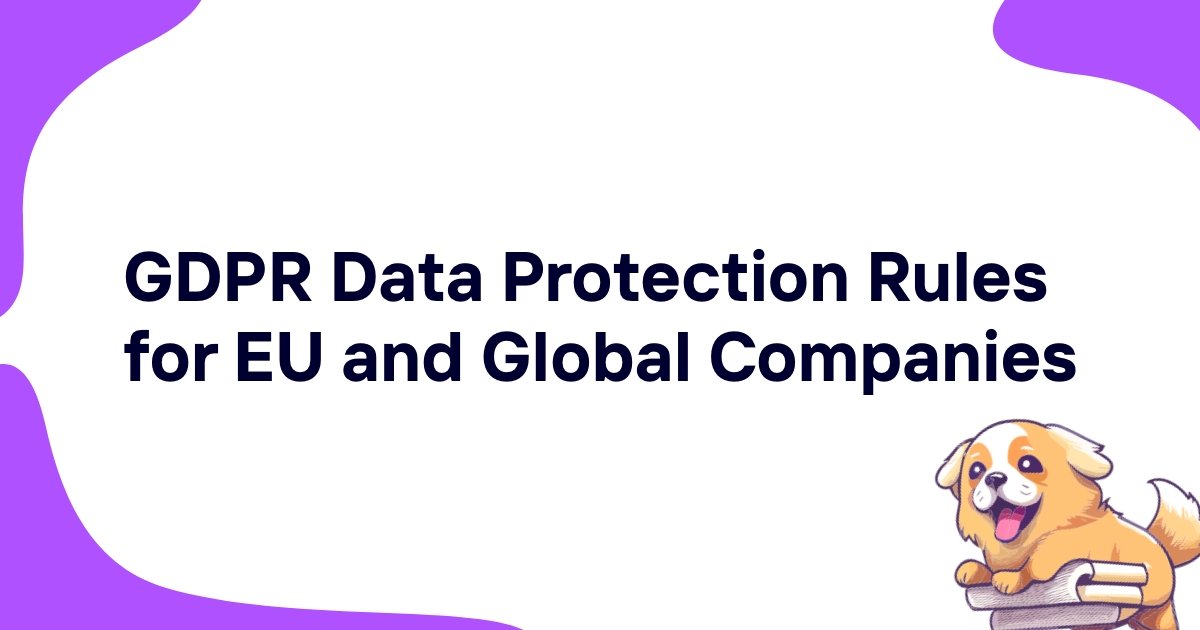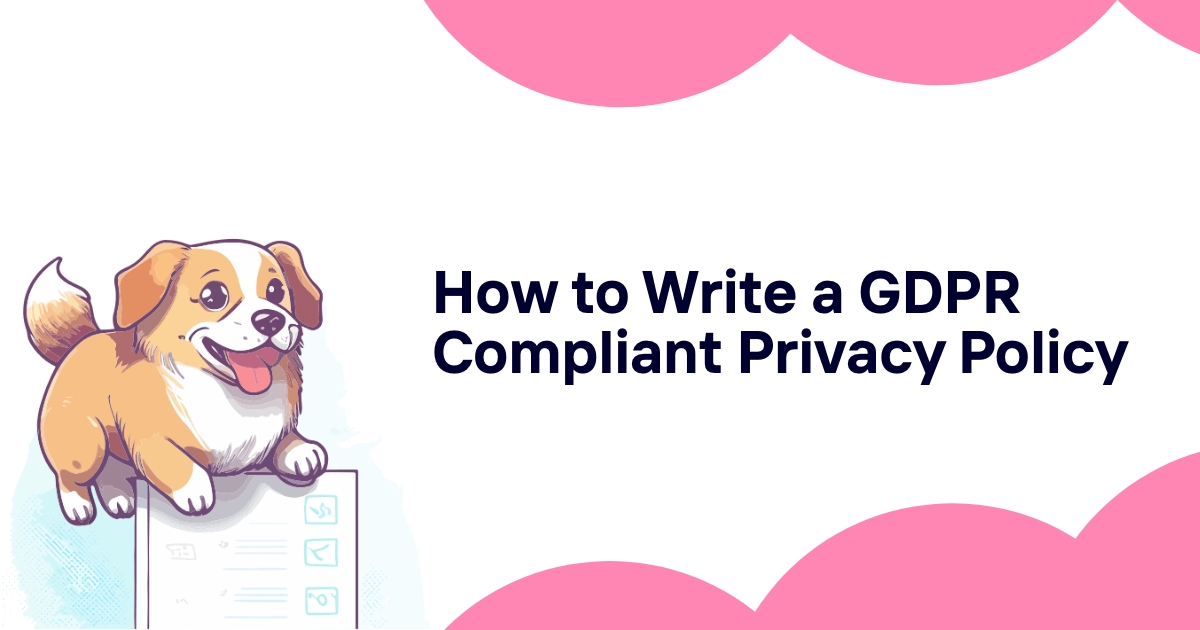GDPR Article 30 requires maintaining detailed records of all processing activities, but most organizations struggle with what to document and how to keep records current. Incomplete records can turn routine regulatory inquiries into major compliance investigations.
Supervisory authorities consistently request Article 30 records during audits, using documentation quality to assess overall compliance maturity. Poor record-keeping suggests broader privacy program weaknesses that attract additional scrutiny.
This guide explains exactly what Article 30 requires, provides practical templates for documentation, and shows how to maintain compliant records that demonstrate accountability and support regulatory interactions.
GDPR Article 30 Overview and Requirements
Legal Foundation and Purpose
Article 30 requires controllers and processors to maintain records of processing activities under their responsibility. This documentation proves compliance with other GDPR obligations and demonstrates accountability.
The requirement applies to all organizations processing personal data, with limited exceptions for companies with fewer than 250 employees that only process low-risk data occasionally.
Records must be written and available to supervisory authorities upon request. Digital formats are acceptable, but information must be readily accessible during regulatory investigations.
Accountability Principle Connection
Article 30 records support the accountability principle by providing evidence that organizations understand their data processing activities and implement appropriate safeguards.
Documentation helps identify compliance gaps, privacy risks, and areas where additional protection measures might be needed to ensure adequate personal data protection.
Comprehensive records demonstrate proactive privacy management rather than reactive compliance, which regulatory authorities view favorably during assessments and investigations.
Regulatory Expectations
Supervisory authorities expect Article 30 records to be accurate, current, and comprehensive rather than outdated documents that don't reflect actual processing practices.
Records should provide sufficient detail for external reviewers to understand processing purposes, data flows, and protection measures without additional explanation.
Quality documentation supports efficient regulatory interactions by providing clear information that answers common questions and demonstrates compliance commitment.
Small Organization Exemptions
Organizations with fewer than 250 employees may be exempt from Article 30 requirements, but this exemption has significant limitations that often don't apply in practice.
Processing that poses risks to individual rights and freedoms requires records regardless of organization size. Most marketing, analytics, and customer management activities meet this threshold.
Regular processing and special category data processing require documentation even for small organizations. Occasional, low-risk processing is rarely exempt in business contexts.
Processing Activity Documentation
Activity Identification Process
Systematically identify all activities where your organization processes personal data including obvious activities like customer management and hidden processing like employee monitoring.
Consider both automated and manual processing activities including paper records, email communications, and offline data handling that might not be immediately apparent.
Include processing performed by third parties on your behalf since controller responsibilities extend to all processing under your direction and control.
Processing Purpose Documentation
Document specific, explicit purposes for each processing activity rather than using vague descriptions like "business operations" or "customer service" that don't provide meaningful information.
Link processing purposes to business functions and explain why personal data is necessary to achieve stated objectives. This supports necessity assessments and legal basis justification.
Avoid purpose creep by clearly defining boundaries for each processing activity and documenting any changes to original purposes that might require additional legal basis.
Data Category Identification
List specific types of personal data processed in each activity including both obvious categories like names and addresses and less apparent data like IP addresses and behavioral information.
Identify special category data separately since these data types require additional protection measures and may need different legal bases for processing.
Document derived or inferred data created through processing activities such as risk scores, preferences, or analytics outcomes that constitute new personal data.
Data Subject Categories
Specify groups of individuals whose data you process such as customers, employees, suppliers, or website visitors. Different categories may have different rights and protection needs.
Consider vulnerable populations like children or employees who may need additional protection measures or have enhanced rights under GDPR.
Document geographic distribution of data subjects since cross-border processing creates additional compliance obligations and notification requirements.
Controller vs Processor Records
Controller Record Requirements
Controllers must document processing purposes and legal basis for each activity. This demonstrates that processing is lawful and serves legitimate business objectives.
Record categories of personal data and data subjects affected by each processing activity to support individual rights handling and impact assessments.
Document data sharing and transfers including recipients, geographic locations, and safeguards used to protect personal data during sharing activities.
Include retention periods for each processing activity and disposal methods used when personal data is no longer needed for original purposes.
Processor Record Requirements
Processors must maintain records of all processing categories carried out on behalf of controllers including specific services provided and data types handled.
Document the controller's identity and contact information for each processing activity to support accountability and enable proper oversight relationships.
Record transfer activities including destinations, dates, and safeguards used when processing involves moving personal data across borders or sharing with sub-processors.
Maintain evidence of controller instructions and authorization for processing activities to demonstrate that processing stays within authorized boundaries.
Joint Controller Arrangements
Joint controllers must clearly document their respective responsibilities for GDPR compliance including which organization handles specific obligations like individual rights.
Record arrangements should specify contact points for data subjects and supervisory authorities to ensure clear communication channels exist.
Document data sharing between joint controllers including legal basis, safeguards, and limitations on how shared data can be used by each party.
Sub-Processor Documentation
Processors must maintain records of sub-processors authorized to handle personal data including their identities, services provided, and geographic locations.
Document authorization processes for engaging sub-processors and requirements for obtaining controller consent before engaging additional sub-processing services.
Record data protection obligations imposed on sub-processors and monitoring activities used to ensure ongoing compliance with contractual requirements.
Record Content Requirements
Essential Information Elements
Processing activity names and descriptions should clearly identify what processing occurs and why it's necessary for business operations or legal compliance.
Controller and processor contact information must include current details for data protection officers or other privacy contacts responsible for GDPR compliance.
Legal basis documentation should specify which Article 6 ground applies to each processing activity and provide justification for the chosen legal basis.
Technical and Organizational Measures
Document security measures protecting personal data including technical safeguards like encryption and organizational measures like access controls and staff training.
Record data protection by design and by default implementations that demonstrate proactive privacy protection rather than reactive compliance measures.
Include incident response procedures and breach notification processes that protect personal data when security incidents occur.
Data Transfer Documentation
Record all personal data transfers to third countries including destination countries, transfer mechanisms, and adequacy decision status where applicable.
Document appropriate safeguards used for transfers without adequacy decisions such as Standard Contractual Clauses, Binding Corporate Rules, or certification schemes.
Include transfer risk assessments and supplementary measures implemented to address specific privacy risks in destination countries.
Retention and Disposal Information
Specify retention periods for each category of personal data based on business needs, legal requirements, and individual rights considerations.
Document disposal methods and schedules used to ensure personal data is properly deleted or anonymized when retention periods expire.
Include procedures for handling retention period extensions and early disposal requests from data subjects exercising erasure rights.
Documentation Templates and Examples
Processing Activity Register Template
Create standardized templates that capture all required Article 30 information in consistent formats that support efficient maintenance and regulatory review.
Include fields for all mandatory elements plus additional information that supports broader privacy compliance such as privacy impact assessment references.
Design templates that can be easily updated when processing activities change to ensure records remain current and accurate over time.
Controller Record Examples
Customer relationship management processing might include contact information, purchase history, and communication preferences collected for service delivery and marketing purposes.
Employee management processing typically involves recruitment data, performance information, and payroll details collected for employment relationship management.
Website analytics processing often includes visitor behavior data, technical information, and usage patterns collected for service improvement and security purposes.
Processor Record Examples
Cloud hosting services might process customer data on behalf of multiple controllers for technical infrastructure and security services.
Payroll processing services handle employee data including salary information, tax details, and benefits administration for human resources functions.
Marketing automation platforms process customer contact information, preferences, and behavior data for campaign management and customer communication services.
Multi-Purpose Processing Documentation
Complex processing activities serving multiple purposes require careful documentation that clearly separates different purposes and their associated legal bases.
Customer data might be processed for contract performance, legitimate interest marketing, and legal compliance purposes requiring different legal basis documentation.
Document purpose limitations and safeguards that prevent personal data collected for one purpose from being used inappropriately for other activities.
Record Maintenance and Updates
Change Management Procedures
Establish procedures for updating Article 30 records when processing activities change including new data collection, purpose modifications, or third-party integrations.
Assign responsibility for record maintenance to specific team members and create accountability mechanisms that ensure updates happen promptly when changes occur.
Implement review cycles that verify record accuracy and identify outdated information that needs correction or removal from documentation.
Version Control and History
Maintain version histories for Article 30 records to demonstrate how processing activities have evolved over time and support regulatory investigations.
Document reasons for changes and approval processes used to ensure modifications align with privacy principles and compliance requirements.
Archive superseded versions while maintaining current records to provide historical context during compliance assessments or incident investigations.
Quality Assurance Process
Regular audits of Article 30 records help identify inconsistencies, gaps, or outdated information that could create compliance problems during regulatory review.
Compare records with actual processing practices through compliance audits to ensure documentation accurately reflects current operations.
Validate record completeness by checking whether all processing activities are documented and whether records contain all required information elements.
Integration with Privacy Management
Connect Article 30 records with privacy impact assessments, consent management, and other privacy documentation to create comprehensive compliance evidence.
Use records to support privacy policy accuracy, individual rights responses, and supervisory authority communications that require detailed processing information.
Leverage documentation for privacy training and awareness activities that help staff understand organizational data processing and protection responsibilities.
Supervisory Authority Access
Request Response Procedures
Develop procedures for responding to supervisory authority requests for Article 30 records including escalation processes and legal review requirements.
Prepare standard documentation packages that can be quickly compiled and reviewed before submission to regulatory authorities during investigations.
Train team members on appropriate responses to informal requests and formal investigation procedures that might require Article 30 documentation.
Information Format and Delivery
Provide records in formats requested by supervisory authorities while ensuring data protection during transmission and storage of sensitive compliance information.
Include explanatory materials that help regulatory reviewers understand complex processing activities without requiring additional clarification meetings.
Organize documentation logically with clear navigation aids that allow efficient review of large record collections during regulatory assessments.
Regulatory Communication Strategy
Maintain professional, cooperative communication with supervisory authorities while protecting legitimate business interests and confidential information.
Provide requested information promptly and completely to demonstrate compliance commitment and avoid escalating regulatory concern about cooperation.
Document all regulatory interactions including requests received, responses provided, and follow-up activities to support ongoing compliance management.
Legal Privilege Considerations
Understand which aspects of Article 30 records might be protected by legal privilege and which information must be disclosed during regulatory investigations.
Coordinate with legal counsel to ensure appropriate privilege claims while meeting transparency obligations that support productive regulatory relationships.
Separate privileged legal advice from factual compliance documentation to avoid inadvertent privilege waiver during record production activities.
Article 30 Compliance Tools
Documentation Management Systems
Implement systems that support efficient creation, maintenance, and updating of Article 30 records while ensuring security and access control for sensitive compliance information.
Choose platforms that integrate with other privacy management tools to reduce duplication and ensure consistency across different compliance documentation requirements.
Consider automation capabilities that can populate record templates from existing systems and notify responsible parties when updates are needed.
Template and Workflow Tools
Develop standardized templates and workflows that ensure consistent record quality while reducing time and effort required for documentation maintenance.
Create approval processes that ensure record changes receive appropriate review before implementation to maintain accuracy and compliance.
Implement notification systems that alert responsible parties about upcoming review deadlines and required record updates.
Integration with Privacy Programs
Connect Article 30 documentation with broader privacy governance activities including privacy impact assessments, consent management, and staff training programs.
Use records to support privacy policy accuracy, individual rights responses, and regulatory communications that require detailed processing information.
Leverage documentation for continuous improvement activities that identify opportunities to enhance privacy protection and operational efficiency.
Monitoring and Reporting
Establish metrics and reporting systems that track record maintenance activities and identify areas where documentation quality or completeness needs improvement.
Monitor regulatory developments that might affect Article 30 requirements and update documentation practices to align with evolving compliance expectations.
Create dashboard views that provide management with visibility into documentation status and compliance readiness for potential regulatory interactions.
GDPR Article 30 records provide essential accountability evidence that supports all other privacy compliance activities. Comprehensive, current documentation demonstrates privacy program maturity and facilitates positive regulatory relationships.
Effective record-keeping requires ongoing attention and systematic procedures but provides significant value for compliance management and business operations.
Ready to implement comprehensive Article 30 documentation? Use ComplyDog and access templates, workflow tools, and compliance tracking that support efficient record-keeping and regulatory readiness.
